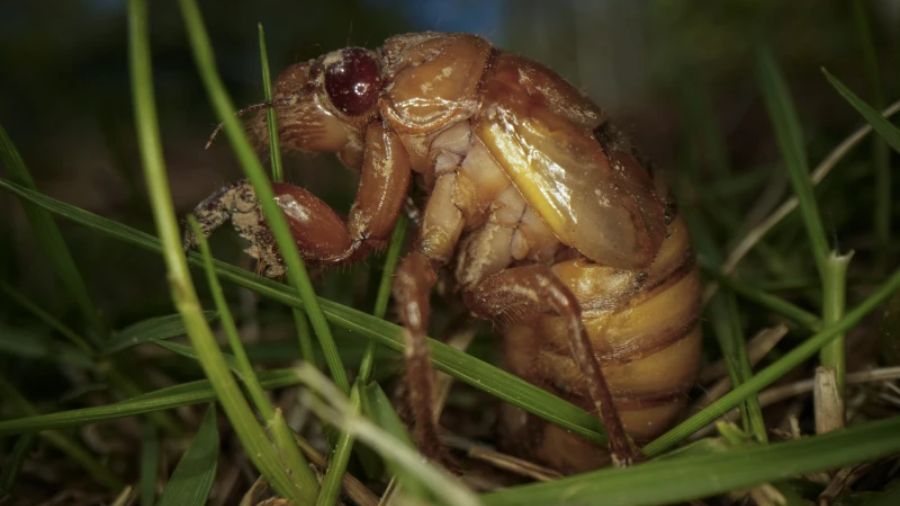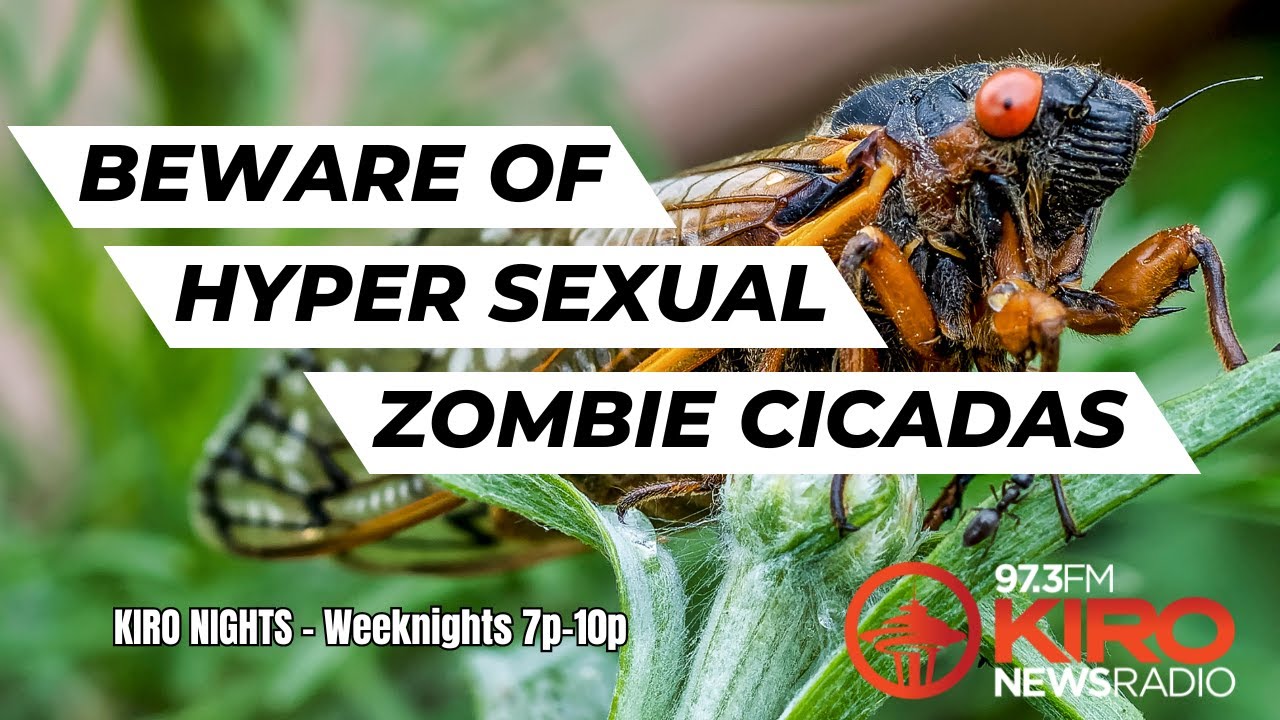Eastern Cottontail population in Puget Sound booms as Seattle is ‘bunny nirvana’
Aug 30, 2020, 7:46 AM

A cottontail rabbit nibbles on some grass near the 17th tee during the International at Castle Pines Golf Club on August 7, 2005 near Castle Rock, Colorado. (Photo by Brian Bahr/Getty Images)
(Photo by Brian Bahr/Getty Images)
You may have noticed more rabbits in your lawn, on the sidewalk, crossing the street, or on the bike trails because there’s a bunny boom in the Pacific Northwest. Wildlife biologist and professor at the University of Washington, Aaron Wirsing, is an expert on the growing rabbit population.
“Most of the rabbits you’re seeing now are Eastern Cottontail rabbits,” Wirsing told KIRO Nights. “So native to the Eastern United States, not native to the West. Although there are cottontail species out here. It is true that in the past, periodically, there have been releases of feral domestic rabbits and those rabbits can take off and grow in number as well, but this is actually a wild species.”
This species has been in Washington for nearly a century, Wirsing explained. In the last several years, however, their numbers do appear to really be taking off in the Puget Sound region.
The Eastern Cottontail is a very popular game species, and was probably brought out west for that reason. It’s then managed to adapt.
“The Eastern Cottontail is a real habitat generalist, very adaptable, including in human modified environments,” Wirsing said. “In fact, the Eastern Cottontail has been spreading westward for some time. They tend to accompany all sorts of different kinds of human landscape modification, including conversion of forests to agricultural areas.”
“It’s not really a species of the dense forest, but it does very well in more open agricultural landscapes as well as in suburban environments, like we have here plentifully in Seattle,” he added.
Some species, like coyotes, raccoons, and even crows often tend to thrive when mixed with human populations.
“[Those] would be animals we consider to be sort of synanthropic species,” Wirsing said. “Those are species that really actually benefit from being in close association with people. And I think you could probably consider the Eastern Cottontail, yes, as among that group, with one caveat being that they need available food. So whatever the environment is, it has to have a lot of plant cover for them. But if you think about Seattle and the way we have constructed this city, it’s sort of bunny nirvana.”
Especially as Seattle has become increasingly suburbanized, Wirsing says, there’s a lot of gardens and lawns.
“Seattle offers the sort of best combination of conditions for Eastern Cottontails in that there’s plenty of cover for them,” he said. “But there’s also lots of delicious gardens and lawns for them to feast on in the evenings and at night.”
Show host Mike Lewis said even though green space is disappearing in the city, small gardens and yards essentially provide salad bars for rabbits all over the city.
“And that kind of goes back to the idea of the cottontail being a synanthropic sort of human loving species is that, unlike other species that would require larger pockets of green space to persist in urban environments, as long as there are lawns and hedge rows that provide them with that combination of cover and food then cottontails are going to do great,” Wirsing said.
That’s why rabbits are often spotted on the trails, like the Burke Gilman, where they can dart in and out of cover.
So why is there a bunny boom?
“We don’t quite know the answer to that, but I think there are a couple of factors that may be contributing,” Wirsing said. “And one is the fact that I just mentioned again that, yes, the growth of Seattle, the sprawl of some of the suburbs, which means sort of more yard and garden habitat for them.”
The other factor, Wirsing says, might be linked to the gradually warming climate.
“The Eastern Cottontail is not a hearty species that’s well equipped for dealing with harsh winters,” he said. “And not that Seattle is a place where the winter is incredibly severe, but even slight reductions in winter severity can greatly enhance juvenile survival. The key sort of limiting demographic phase for rabbits is offspring survival. They have a lot of offspring, but a lot of them can die because of predation, harsh winters, disease, things like that.”
The last point is that many rabbit species, including cottontails, are a boom or bust species.
“So whatever the reason, whatever set this boom off, we’re seeing the fruits of that boom right now,” Wirsing said. “And it will keep going for a while, but probably not forever. … There are sort of controlling factors, which can bring numbers back down.”
Along with more rabbits, there typically comes an increase in coyotes, raptors, and other predators.
“I don’t know if you consider that a side benefit or not, but one of the interesting things about having these rabbits all over town is it’s going to attract a lot of wild predators into urban areas as well,” Wirsing said.
“I’m seeing a lot of reports of coyotes running around the exact same areas where you’re seeing a lot of rabbits, including right around the UW campus,” Wirsing added.
One of the challenges with both coyotes and rabbits is that, particularly in places where they overlap with people, they tend to come out mostly at dawn, dusk, and during the night. So those that we observe, Wirsing explained, are the minority.
“Observations don’t provide you with very good information,” he said. “There have to be sort of systematic efforts to estimate their populations. Those are ongoing with coyotes.”
“I don’t know the exact number — all I would say is it’s a lot, and it’s more than you think,” he added.
Wirsing is working with other professors and undergraduate at the UW to initiate a cottontail survey, starting near campus.
“We’re going to gradually branch out using a number of different methodologies to try to get a handle on how many rabbits we have because one of the real constraints that sort of limits my ability to answer your questions is we don’t have a good baseline about sort of where we started with cottontail numbers,” Wirsing said. “There’s good circumstantial and observational evidence their numbers are going up, but we need to set a hard baseline that we can then track year after year.”
If tracking is in place, then coyote sighting and other predators can be simultaneously tracked as well.
“In addition to that, I think there’s real value in harnessing citizen science,” Wirsing said. “We need the citizens of Seattle and the greater Puget Sound region to help us by reporting observation.”
The tracking system isn’t yet set up, but Wirsing hopes they’ll have it ready in the next year.
In the meantime, Wirsing says while the bunnies are cute, they should be treated the same as any other wild animal encounter.
“Again, this is a non-native species,” he said. “That doesn’t necessarily mean it’s that destructive per se … but, of course, any time a species is non-native, there’s always the potential that it does economic damage to human interests as well as harms other species.”
“Because this is sort of a nascent process, we don’t fully know what the ecological consequences are,” he added. “I will say they get into people’s gardens, and they certainly can damage those.”
If numbers keep rising, rabbits could also destroy a sensitive plant species.
“Rabbits are pretty benign from a human perspective, although they should be treated like any other wild animal,” Wirsing continued. “They’re not a domestic rabbit. So they can be carriers, for example, of things like tularemia. … I think when people see rabbits out there, you just want to give them the same berth that you would give any other wild animal.”
As for those who want to leave food out for the rabbits, Wirsing discourages that behavior for a variety of reasons.
“One, I think they’re doing just fine with the other food at their disposal,” he said. “But, again, doing that can end up attracting animals to particular areas, which again sort of enhances human wildlife contact. And that can, again, rabbits aren’t very dangerous, but attracting them to a particular area can enhance their damage on your lawn, neighbor’s lawns, that could end up attracting in predators like coyotes, which in turn can prey on people’s pets. So there’s sort of a chain of events that can be set in motion.”
“Just in general, as a rule, it’s best not to feed wildlife.”
Listen to KIRO Nights weeknights from 7 – 10 p.m. on KIRO Radio, 97.3 FM. Subscribe to the podcast here.













